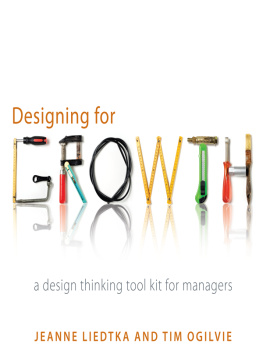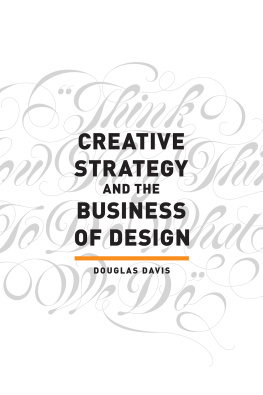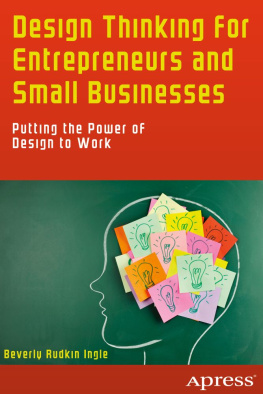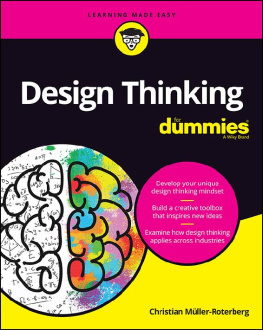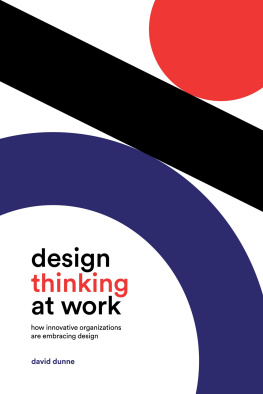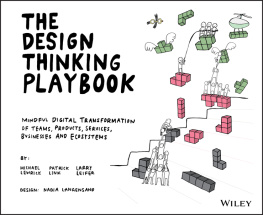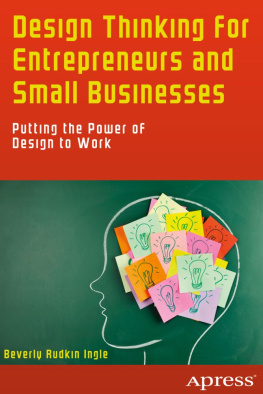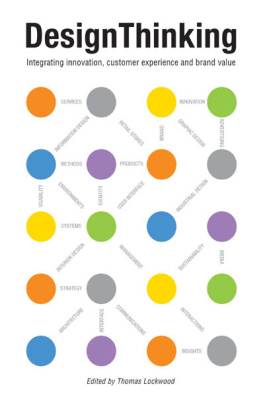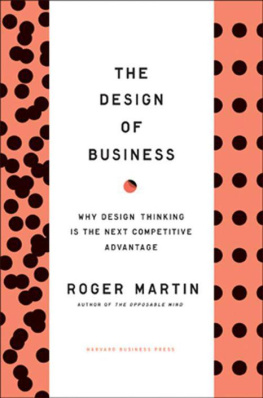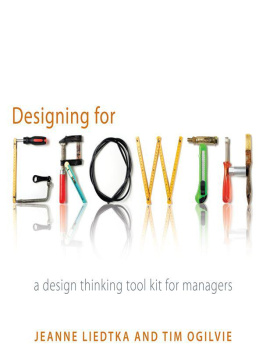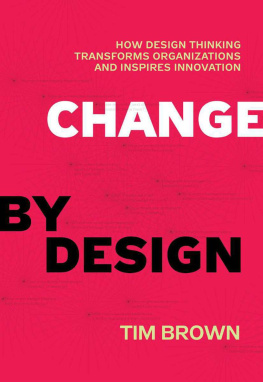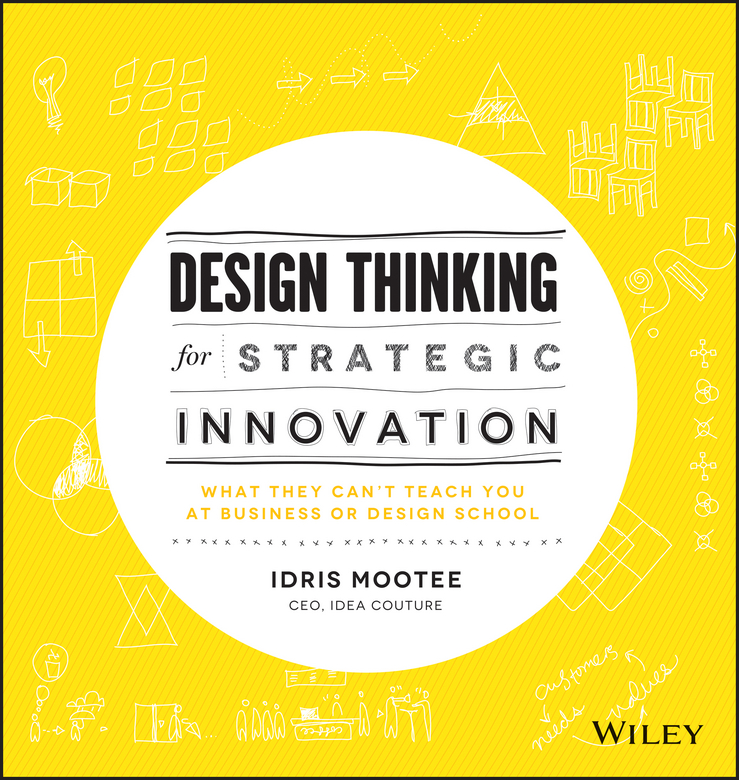Contents

Cover image: Sarah Chung
Cover & Book design: Sarah Chung, Idea Couture
Copyright 2013 by Idris Mootee. All rights reserved.
Published by John Wiley & Sons, Inc., Hoboken, New Jersey.
Published simultaneously in Canada.
No part of this publication may be reproduced, stored in a retrieval system, or transmitted in any form or by any means, electronic, mechanical, photocopying, recording, scanning, or otherwise, except as permitted under Section 107 or 108 of the 1976 United States Copyright Act, without either the prior written permission of the Publisher, or authorization through payment of the appropriate per-copy fee to the Copyright Clearance Center, 222 Rosewood Drive, Danvers, MA 01923, (978) 750-8400, fax (978) 646-8600, or on the web at www.copyright.com . Requests to the Publisher for permission should be addressed to the Permissions Department, John Wiley & Sons, Inc., 111 River Street, Hoboken, NJ 07030, (201) 748-6011, fax (201) 748-6008, or online at www.wiley.com/go/permissions .
Limit of Liability/Disclaimer of Warranty: While the publisher and author have used their best efforts in preparing this book, they make no representations or warranties with the respect to the accuracy or completeness of the contents of this book and specifically disclaim any implied warranties of merchantability or fitness for a particular purpose. No warranty may be created or extended by sales representatives or written sales materials. The advice and strategies contained herein may not be suitable for your situation. You should consult with a professional where appropriate. Neither the publisher nor the author shall be liable for damages arising herefrom.
For general information about our other products and services, please contact our Customer Care Department within the United States at (800) 762-2974, outside the United States at (317) 572-3993 or fax (317) 572-4002.
Wiley publishes in a variety of print and electronic formats and by print-on-demand. Some material included with standard print versions of this book may not be included in e-books or in print-on-demand. If this book refers to media such as a CD or DVD that is not included in the version you purchased, you may download this material at http://booksupport.wiley.com . For more information about Wiley products, visit www.wiley.com .
ISBN 978-1-118-62012-0 (cloth); ISBN 978-1-118-74885-5 (ebk);
ISBN 978-1-118-74868-8 (ebk)
To A. Mootee
Thank you, Dad, for believing in me before I did.
And you were always right.
ACKNOWLEDGMENTS
This book would not have been possible without the generous help and support from a great many people. Four in particular stand out: Dr. Moran Gerard, who came to the rescue on the week before I needed to submit my final manuscript and has been a valuable colleague, friend, and editor; Sarah Chung, who has been working with me to shape the design of this book and is responsible for giving it a personality and making it awesome; Erik Roth, who took the time from his crazy schedule to write the introduction for this book; and Brian Kenet, who invited me to design and teach the Design Thinking Executive Program at the Harvard Graduate School of Design, which this book was based upon.
I owe a huge debt of gratitude to all my friends and clients around the world who provided me the opportunities to introduce these ideas to their organizations. Scott Danielson for his friendship, enlightening dialogues, and creative spirit that he radiates. And everyone at Idea Couture, including Cheesan Chew, Scott Friedmann, and Patrick Glinski who are with me throughout our journey of prototyping a great design thinking organization. And Jessica Tien for taking all those things off my plate so I never have to worry about them.
I would also like to thank the anonymous reviewers for their feedback on earlier drafts and in particular Ashley Perez and Jamie Farshci for their patience to read and edit my messy first draft. And all those who helped me to improve the clarity and readability of this book. Any errors, omissions, and misinterpretations remain mine.
I know every author receives support from their family, but mine has been awesome and they have been the source of inspirations and Im so thankful. We all need inspiration and watching them I find something, truly in my heart, that strives me to reach a little higher... dig a little deeper... dream a little bigger!
I truly believe we are at an important tipping point in human and economic history. This book promotes the vision that sustainable growth can only be made possible when we synthesize concepts including natural capital, creative capital, and social capital and when all are integrated into the balance sheet. This vision of a design thinking organization is founded on the mutually reinforcing and integrated principles of efficiency, equity, and reciprocity. It is the habits of mind and strategy that often prevent todays dominant firms from reinvention.
FOREWORD
Our world is increasingly complex and difficult to interpret. Multiple forcestechnological, regulatory, competitive, and so onact on a given context to shape the rules of what is possible and probable. Uncovering the most valuable opportunities is increasingly challenging for innovators, especially those using a traditional tool kit. New product development processes typically churn out incremental, me-too solutions when more substantial innovation is needed to capture competitive advantage.
Delivering predictable, consistent, and meaningful value from innovation remains a top challenge for executives, but most find the challenge too difficult to crack. Instead companies essentially give up and rely on pure serendipity to stumble upon valuable eureka moments, while others default to various versions of a creative process with the hope that it will yield a great outcome. Although these approaches can certainly yield success, the repeatability needed by any large organization is quite low.
This book presents an alternative to the status quo, an alternative that some leading-edge companies have begun to adopt. Design thinking can weed through the uncertainty and anchor innovation on the fundamental drivers of customer behavior, their interactions with the surrounding ecosystem, their interactions with one another.
Although design thinking itself is not new, Idris presents a fresh look at the practical application of this competency within the modern enterprise seeking to improve its innovation performance. This book is not an academic exercise into the possibility of design but a pragmatic explanation of how design principles can be embedded into an organization to give it insight into valuable opportunities previously hidden from traditional ways of working.
This book presents a framework and way of working that accommodates the dynamism and uncertainty surrounding most decision making companies face today. It also shares a methodology on how to embed a new design thinkingbased tool kit into a modern enterprise that will enable a new wave of collaboration, insight, and learning to improve the quality of decision making, the allocation of resources to the best opportunities, and ultimately the formation of a more consistent stream of value creation.
Idris challenges the philosophies that underpin the management regimes of the modern enterprise and offers an alternative that will allow companies to adapt to the forces that impact their internal and commercial performance.
This mode challenges the status quo and encourages:


